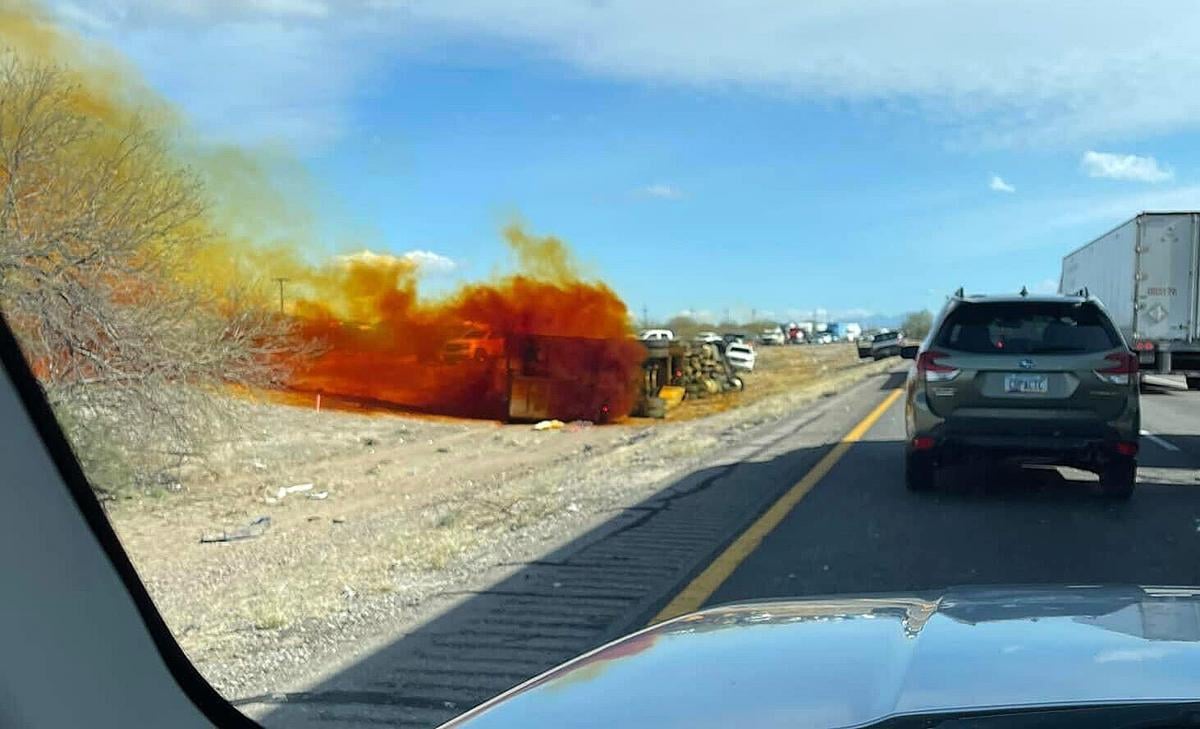A semi-truck driver who crashed on Interstate 10 in February leading to a nitric acid spill that closed the highway and disrupted lives of people across Tucson’s southeast side, had a blood alcohol level nearly 8 times the legal limit, a toxicology report from the Pima County Office of the Medical Examiner shows.
The driver, 54-year-old Ricky Immel, died after his rig carrying about 18,200 kilograms of nitric acid on I-10 crashed near Kolb Road on Feb. 14. In Arizona, the legal BAC for commercial drivers is .04%. That means with a BAC of 0.312, Immel was nearly eight times above the state’s legal limit, according to the report.
Some of the nitric acid spilled when containers ruptured in the crash, causing DPS to shut down both directions of the I-10 and told people in the area to shelter in place. Only one residence was evacuated following the spill.
While officials were responding to the crash, a small fire broke out in the median due to the hazardous materials, and Tucson Fire crews were able to extinguish the flames and keep it from burning further south. The following morning another plume developed, which officials believe was related to the especially cold and rainy morning.
The autopsy report attributed Immel’s death to “blunt force injuries, probable positional asphyxia and exposure to nitrogen gasses with hypertension, obesity, acute and chronic ethanol abuse and diabetes as contributing conditions.”
The toxicology report also showed Immel had ingested chlordiazepoxide, which is used to treat anxiety disorders and aid in alcohol withdrawal, according to the report.
At a Feb. 16 news conference, Arizona Department of Public Safety Captain Benjamin Bullard, the incident commander for the spill, said “At this point, we have no reason to believe that high speed, that drugs or alcohol are involved in this case” but there was a possibility of a “medical issue.”
Preliminary investigations showed the truck slowly veered off the roadway onto the median, where the uneven ground caused the truck to roll onto its left side, “Which very often is indicative of either a fatigued driver or someone who’s had some sort of medical event that led to the loss of control the vehicle,” Bullard said at the news conference.
Arizona DPS did not have a comment on the results of the driver’s toxicology report, but said the report, “would be part of our overall investigation which has not been concluded.”
Contractors are currently working on removing and replacing the dirt at the median where the truck rolled over, but the Arizona Department of Transportation said the remaining chemicals don’t pose a danger to the public. “Since everything’s soaked into the soil, it’s just fertilized dirt,” said Travis Qualls, ADOT’S hazardous materials response specialist.
There’s no established timeline for when the work will be completed. Qualls said the contractor working on the median is currently overburdened with work and the cleanup is “one of those things that you would like everything to be taken care of immediately, but that doesn’t happen.”
The owner of the truck containing the nitric acid, Landstar, is paying for the remediation work, which Qualls estimates could cost from $200,000 to $500,000. Landstar did not respond to the Star’s request for comment.





